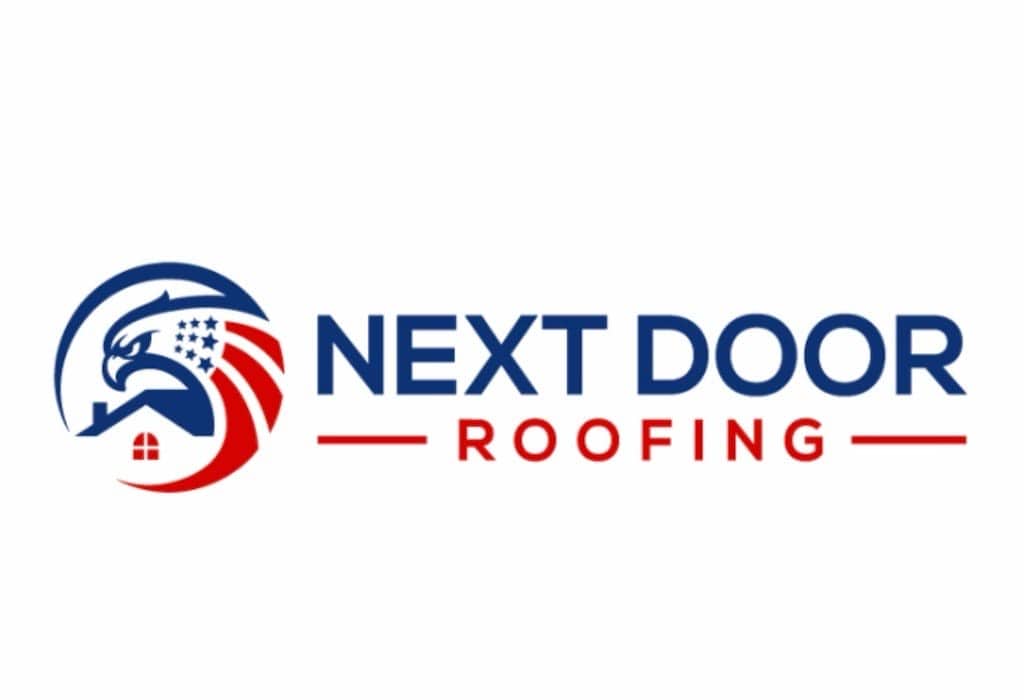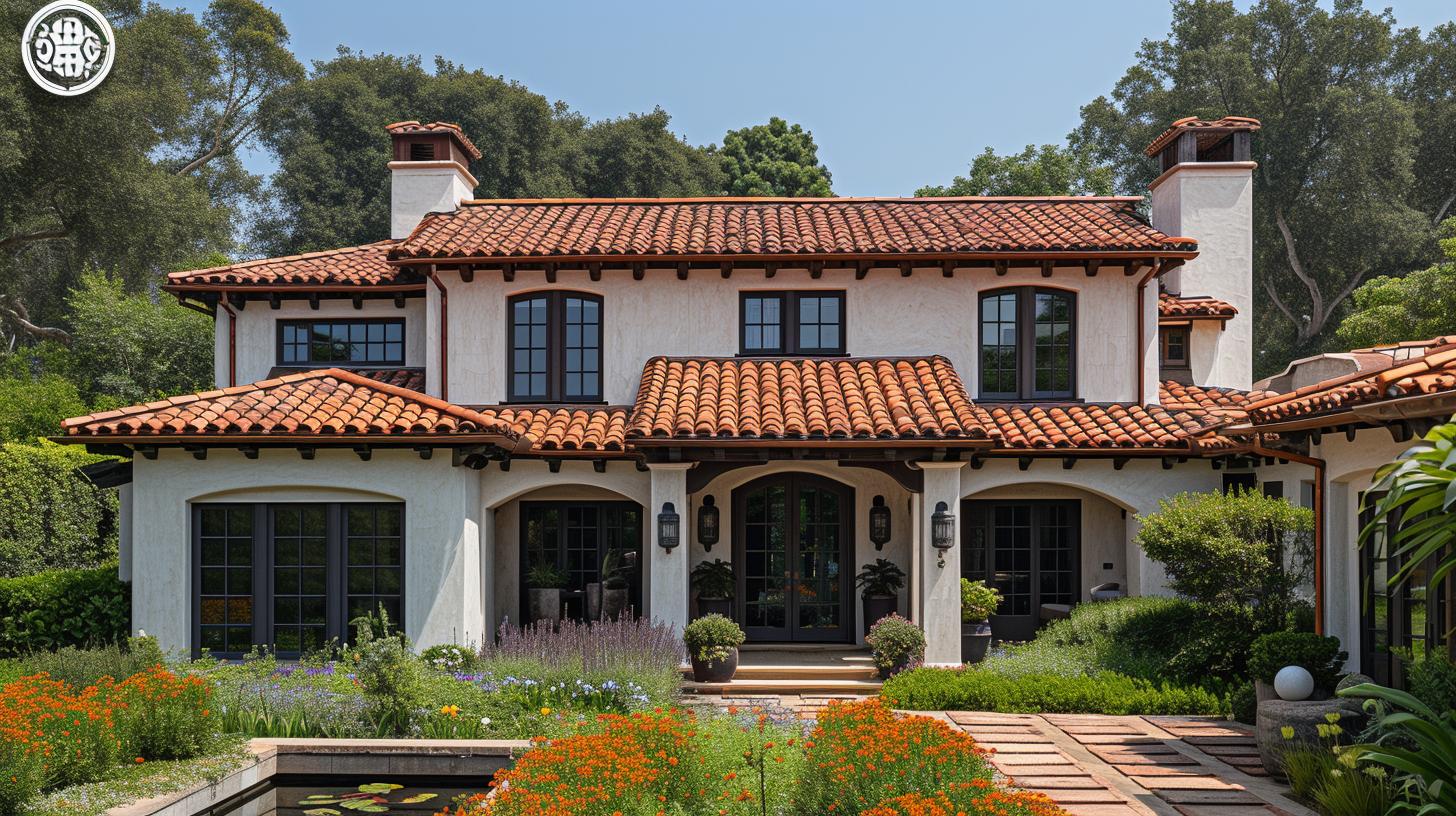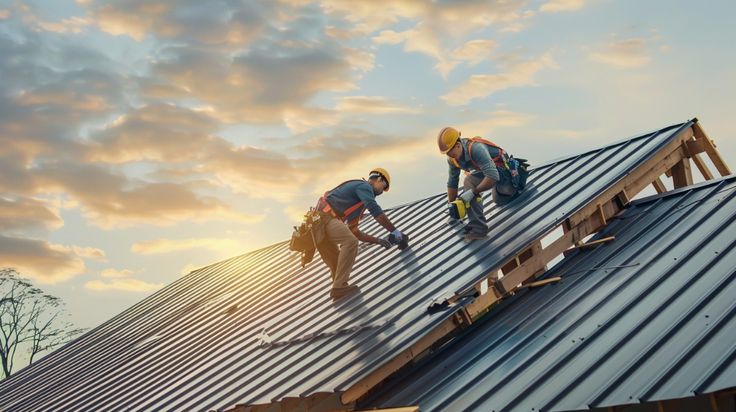Sustainable Roofing Options for Eco-Conscious Businesses and Homeowners has ended up a key term within the development and redesign industry, reflecting a collective drive towards more ecologically mindful building hones. This concept alludes to roof frameworks outlined with materials and strategies that minimize natural affect and contribute emphatically to building proficiency.
As we witness quickening climate alter and expanded mindfulness of our biological impression, more businesses and property holders are prioritizing maintainability, not as it were in their day-to-day operations or ways of life but too within the exceptionally structures they possess.
The request for eco-friendly development is developing as people recognize the coordinate association between their choices and the wellbeing of our planet. Receiving feasible material hones is portion of this move toward green living, advertising long-term benefits that go past money related investment funds.
With this web journal post, we proposed to supply a comprehensive investigation of different feasible material alternatives that adjust with eco-conscious values. Our reason is evident: to direct businesses and property holders in making educated choices around their material frameworks, guaranteeing they select arrangements that reflect their commitment to protecting the environment.
By digging into this subject, perusers will find not as it were what constitutes feasible material but too get it why it’s basic for a more beneficial planet. We point to show an combination of environmental material options whereas examining each option’s broader suggestions for both individual targets and worldwide natural objectives. Connect us as we dive into the long run of development, centering on one of its most vital components: a roof over our heads – re-imagined with maintainability at its center.
Why Sustainable Roofing Is Crucial for the Environment
Sustainable roofing is not just a trend; it is becoming an essential part of the building industry due to its significant environmental benefits. This section delves into why opting for eco-friendly roofing materials and practices is more important than ever.
Environmental Impact of Traditional Roofing Materials
Traditional roofing options, commonly composed of asphalt shingles, tar, and other non-recyclable materials, have considerable negative effects on the environment. The production process of these materials often requires substantial energy input and emits harmful pollutants into the atmosphere.
When old roofs are replaced, these materials frequently end up in landfills where they do not decompose easily, adding to the growing waste problem. Moreover, such materials can contribute to poor insulation and higher energy usage in buildings due to their suboptimal reflective properties which leads to what is known as “urban heat islands,” contributing further to global warming.
Benefits of Sustainable Roofing: Energy Efficiency and Waste Reduction
One of the conspicuous focal points of sustainable roofing is its commitment to vitality proficiency. Numerous eco-friendly material choices are planned to reflect sun oriented vitality instead of retain it, subsequently decreasing cooling costs amid hot climate conditions – a highlight that conventional material needs. This reflects emphatically not as it were on homeowners’ utility bills but too on the by and large request for power produced from fossil powers, subsequently diminishing nursery gas outflows related with control generation.
In expansion to made strides vitality productivity, sustainable roofing materials are ordinarily more solid and can be made from reused substance or are completely recyclable at the conclusion of their life cycle. This characteristic impressively decreases the sum of squander created when rooftops inevitably require substitution. By choosing maintainable material arrangements, businesses and mortgage holders specifically contribute to lessening landfill squander and energize reusing businesses.
Role in Combating Climate Change
Sustainable roofing plays a basic part in moderating climate alter by bringing down a building’s carbon impression through decreased vitality utilization. Whereas all buildings unavoidably radiate a few level of carbon dioxide through warming and cooling necessities, an eco-conscious roof can significantly decrease this yield.
Too inalienable in sustainable roofing frameworks is their capacity for water collecting and progressing discuss quality when vegetative roofs-also known as green roofs-are utilized; these living frameworks sequester carbon dioxide whereas giving extra cover.
It’s clear that by contributing in sustainable roofing arrangements businesses and mortgage holders take an dynamic position against biological debasement. The total impact in case numerous followed to such hones would be significant advance towards a more advantageous planet. Maintainable material stands out as one implementable methodology inside our reach that provides unmistakable benefits for both people’s living situations and the broader biological system which supports us all.
Key Features of Sustainable Roofing Materials
Sustainable roofing is defined by a few core characteristics which make it favorable from an environmental standpoint. It includes aspects like long-term durability, energy efficiency, ease of recycling or disposal, and the use of materials that have a low impact on the environment both in production and throughout their life cycle.
Sustainable roofing options are designed not only to provide shelter but also to reduce the carbon footprint of buildings, support better waste management practices, and even contribute to energy creation in some instances.
Recyclability and Reduced Waste Impact
A pivotal feature of sustainable roofing materials is their capability to be recycled or repurposed at the end of their life. Rather than contributing to landfill volume like many traditional materials, sustainable choices can often find a new lease on life through recycling processes.
For example, metal roofs are desirable for their durability and because they’re fully recyclable when it’s time for replacement or renovation. Furthermore, some innovative products are made from recycled content themselves which further reduces waste-a commendable cycle of reuse that keeps materials within a closed loop.
Enhanced Durability and Life Span
The longevity of a roof is integral to its sustainability; the longer a roof lasts before needing to be replaced, the less material waste there will be over time. Durability ties into sustainability by diminishing the frequency with which resources need to be consumed for roofing projects.

Materials such as slate or terra cotta can last over a century under proper conditions, while high-quality metal roofing often comes with warranties spanning several decades. These durable options require less maintenance over their lifespan compared to traditional roofing materials like asphalt shingles, resulting in both economic savings and environmental benefits.
Energy Efficiency Contributions
Sustainable roofing too plays an fundamental part in improving building vitality productivity. Cool rooftops reflect more daylight and assimilate less warm than standard rooftops by utilizing exceedingly intelligent paints, tiles or shingles-contributing altogether toward decreasing cooling costs in hotter climates. Green roofs-those secured with vegetation-provide characteristic separator whereas sun oriented tiles really deliver power that can control homes or businesses straightforwardly from daylight introduction on your roof.
Certifications such as Vitality STAR appraisals for cool rooftops or LEED certification focuses accessible due to green material highlights offer direction in deciding how certain items contribute towards maintainability objectives. When considering sustainable roofing alternatives, hunt for these certifications as they guarantee you that these materials meet particular criteria with respect to their natural affect and adequacy at sparing vitality over their lifetime utilize.
Sustainable Roofing Options for Businesses and Homeowners
Sustainable roofing materials now offer many options to businesses and homeowners looking to reduce their environmental impact while maintaining stylish and efficient buildings. Solar tiles protect like shingles and convert sunlight into electricity, reducing dependence on non-renewable energy.
Though upfront costs are higher than conventional roofing, reduced utility bills are a compelling benefit for many. Tesla’s Solar Roof uses solar tiles to blend into a home’s design while generating clean energy.
Another sustainable option is metal roofing, which can last over 50 years and reduce landfill waste. Due to their durability and ability to reflect sunlight, metal roofs keep buildings cooler and reduce air conditioning energy.
Businesses with large facilities that need to manage internal temperatures benefit from this feature. Metal is fully recyclable, further enhancing its sustainability.
| Material | Benefits | Potential Drawbacks | Ideal Use-Cases |
|---|---|---|---|
| Solar Tiles | Energy generation, aesthetic appeal | Higher initial cost | Homes/businesses with suitable sunlight exposure |
| Metal Roofing | Longevity, energy efficiency, recyclable | Noise during rain/hail; higher upfront cost compared to asphalt shingles | Areas with extreme weather; large commercial buildings |
Recycling rubber and plastic into shingles is another eco-friendly roofing option. These recycled materials are combined to make strong, durable shingles that look like wood or slate without the environmental impact of extracting and processing raw materials. Post-consumer waste makes this innovation eco-friendly and cheaper than slate.
Urban biodiversity, stormwater management, insulation, and cost savings are all benefits of green roofs, especially in flood-prone or heat island cities. This may appeal to businesses with suitable flat roofs for its eco-benefits and unique spaces for employee relaxation or customer engagement.
Because they reflect sunlight and absorb less heat, cool roofs are easier to sustain. This property naturally cools buildings in hot weather, saving energy and air conditioning. Buildings in hotter climates where lowering indoor temperature is difficult benefit from this.
Financial Implications of Choosing Sustainable Roofing
When investing in sustainable roofing, consider the short- and long-term financial effects. Eco-friendly roofing materials may cost more upfront, but lower utility bills, maintenance costs, and property value may offset these costs.
Solar tiles, for instance, are expensive but generate electricity, lowering energy costs. Metal roofs, though more expensive, have longer warranties, are weatherproof, and improve home insulation, lowering energy costs. Recycled shingles are cheaper and of comparable quality, and their energy-efficient production reduces carbon emissions.
Sustainability in building practices has been recognized by governments worldwide, leading to incentives to reduce the initial financial burden for green technology adopters. Many regions offer tax credits, rebates, and grants to lower the cost of installing a sustainable roof. Research local programs that offer eco-friendly renovation or installation funding.
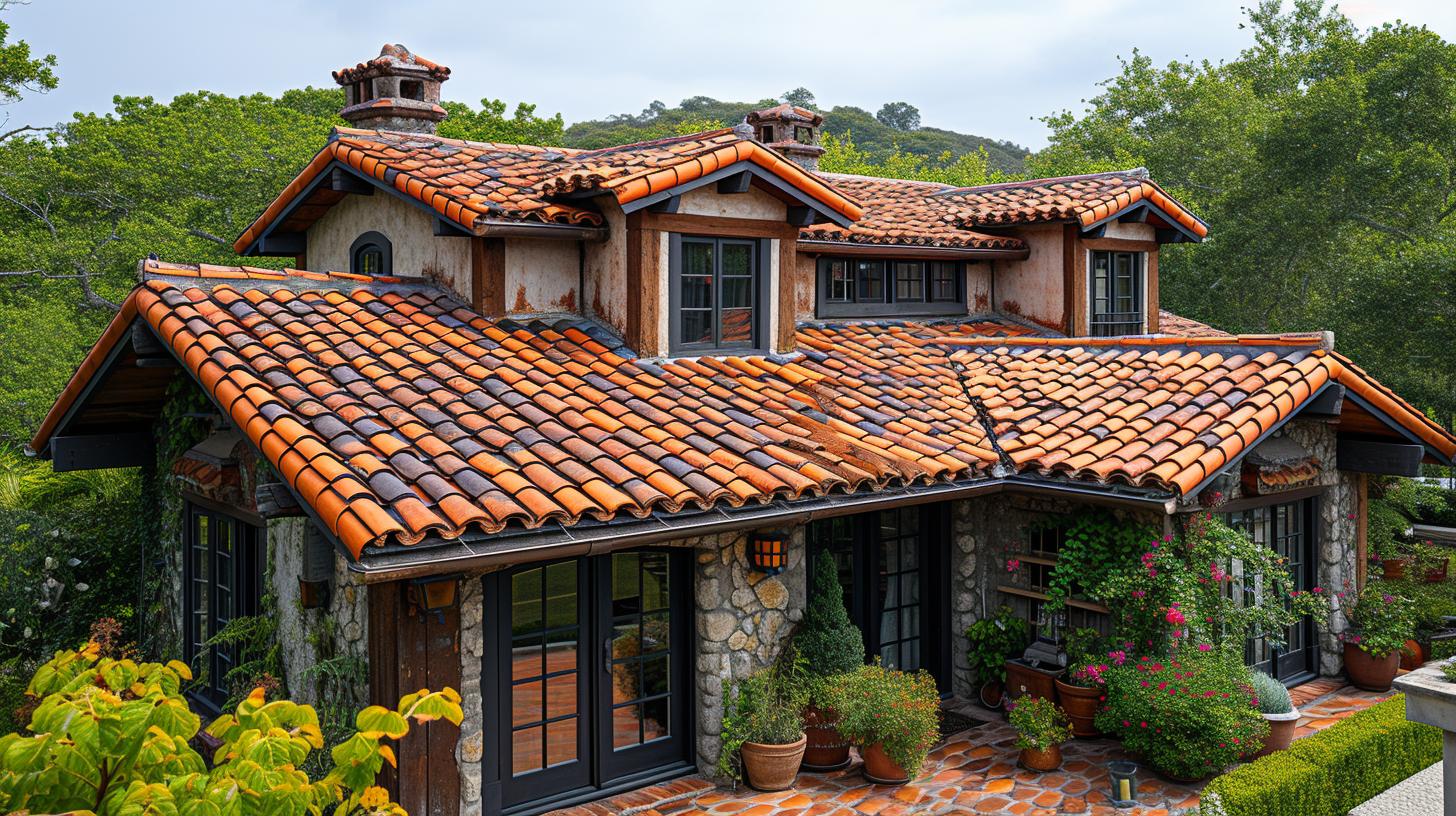
Additionally, people ought to figure within the Return on Speculation (ROI) when mulling over a move to economical material alternatives. With improved toughness and vitality reserve funds woven into their plan, these materials frequently display critical investment funds over their life expectancy compared with standard material arrangements. From now on, seeing maintainable material through a long-term focal point underscores its potential for favorable financial results other than its natural benefits.
| Sustainable Roofing Material | Approximate Initial Cost | Estimated Lifespan |
|---|---|---|
| Solar Tiles | $20 – $25 per square foot | 25 – 30 years |
| Metal Roofing | $10 – $18 per square foot | 40 – 70 years |
| Recycled Shingles | $3 – $5 per square foot | 20 – 50 years |
Sustainable roofing requires careful planning and budgeting. Eco-friendly materials may cost more upfront, but homeowners should consider the savings they will see from reduced electricity use or longer-lasting materials. Integrating sustainability into one’s living environment invests in personal finance and societal well-being by supporting ecological conservation.
How to Choose the Right Sustainable Roofing for Your Property
Selecting a sustainable roofing material for your property requires careful consideration of several factors. Climate and location are important because some materials prefer certain weather and temperatures. In hot climates, cool roofs reflect heat and keep buildings cooler.
Choice of sustainable roofing also depends on building design. Complex roofs may not work with heavier materials or green roofing systems. Your values and commitment to sustainability can also influence your choice, whether you value recycled content, solar tile energy generation, or low-impact production.
Sustainable roof installation requires professional expertise. An eco-friendly roofing contractor can advise you on the best materials and installation methods. Their expertise can prevent issues like poor installation from negating eco-friendly roofing.
To aid in making an informed choice, here’s a checklist that encompasses key questions to contemplate during the selection process:
- What is my local climate, and what extreme weather conditions could my roof face?
- Is my building design suitable for the type of sustainable roofing I’m considering?
- How does my budget align with the initial costs and expected long-term savings from different roofing options?
- What are my key environmental concerns? (e.g. reducing waste, energy consumption)
- Are there available contractors who specialize in sustainable roofing installation near me?
- What government incentives or rebates might help offset the cost of my sustainable roofing project?
- What certifications should I look for in materials to ensure they meet sustainability standards?
Lastly, balancing eco-friendliness with practicality is vital. Sustainable options should not only be good for the environment but must also meet safety standards while providing adequate protection for your property. In order to make choices that serve both ecological responsibilities and homeowner interests, careful consideration of these elements is crucial when selecting sustainable roofing solutions.
The Future of Roofing Is Sustainable
Sustainable roofing practices are becoming more common in the building industry. Innovations in roofing technology are enabling eco-friendly solutions that will reduce environmental impact.
Trends like solar panel integration indicate a move toward multi-functional materials that protect structures and generate energy. Photovoltaic cells in asphalt shingles or metal roofs allow homeowners to harness solar energy and reduce fossil fuel use.
Bio-based roofing materials are another promising environmentally friendly option. Researchers are testing organic compounds to make eco-friendly roofing materials. New materials from renewable sources aim to provide high durability and insulation while keeping roofs carbon neutral. Some bio-based materials are self-healing, extending their lifespan and reducing replacements and repairs.
- Integration of Smart Roofing Technology: Advanced sensors and IoT-enabled devices make it possible to monitor roof conditions in real-time, enabling proactive maintenance, optimizing energy use, and extending a roof’s life span.
- Adjustable Insulation Properties: Materials that can change their thermal emittance based on external conditions can provide optimal indoor temperatures without overburdening heating or cooling systems.
- Recycling End-of-Life Roofs: Focusing on how roofs can be recycle will be at the forefront, ensuring that the end-of-life of a roof doesn’t result in landfill waste but rather in material for new construction projects.
As businesses and homeowners become more aware of their environmental footprints, demand grows for products that align with these values. Subsequently, manufacturers are likely to continue innovating to meet this demand.
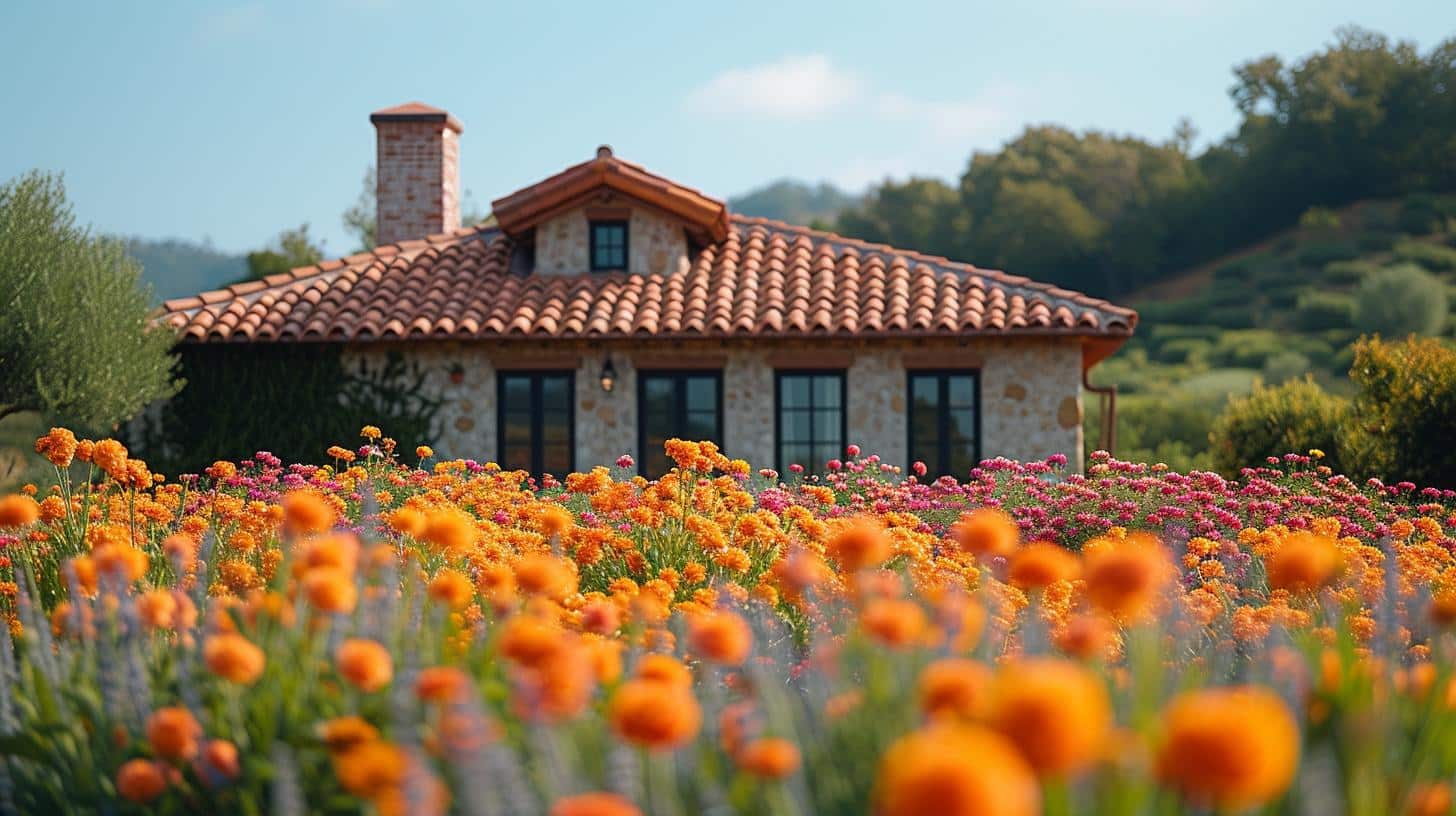
Recognizing the significance of maintainability amplifies past prompt benefit edges; it recognizes duty for future generations’ capacity to flourish on our planet. These continuous advancements recommend that receiving maintainable material choices will not just be a slant but an industry standard – situating synchronous development between biological contemplations and financial advancements.
Conclusion and Call to Action
As this article concludes, sustainable roofing is more than a trend it’s a necessity for eco-conscious businesses and homeowners. From reducing our buildings’ carbon footprint to improving energy efficiency and reducing waste, sustainable roofing protects our environment.
The variety of options shows an inspiring movement toward materials and practices that respect the environment and our needs for durability, cost-effectiveness, and design aesthetics. Understanding the environmental impact of traditional roofing has made sustainable alternatives essential. We’ve examined solar tiles, metal roofing, green roofs, and cool roofs, each with their own benefits and properties.
This knowledge empowers you to make environmentally conscious decisions without sacrificing quality or finances. Government incentives can reduce the cost of such investments and promote a greener future. You may be ready to install sustainable roofing on your home. Whether you’re drawn to solar tiles’ long-term savings or a green roof’s biodiversity boost, remember that every small step helps us become more eco-friendly.
Contact: Next Door Roofing contractors for advice or to start planning your upgrade. They will help you achieve your environmental stewardship goals through smart building choices. So do your research, talk to sustainable roofing experts, and start creating a plan that meets your property’s needs while helping the planet. Below are more resources and directories to help you find experienced contractors who can build your environmentally friendly roof.
When making your next decision, remember that investing in sustainable roofing is a commitment to a healthier world for all tomorrow.
Frequently Asked Questions
What Is the Most Sustainable Roofing?
The most sustainable roofing material is often consider to metal roofing due to its durability, recyclability, and energy efficiency. It lasts much longer than traditional asphalt shingles often 50 years or more and can also make from recycle materials. Additionally, its reflective properties can contribute to reducing cooling costs in hot climates.
What Is Sustainability in Roofing?
Sustainability in roofing refers to the selection of materials and construction practices that are environmentally responsible and resource-efficient throughout a roof’s life cycle. This includes using durable materials that have a minimal impact on the environment, are recyclable at the end of their life, improve energy efficiency within the building, and require less maintenance and replacement over time.
Are Roof Shingles Sustainable?
Roof shingles can sustainable depending on the material they are made from and how they are manufacture. For example, shingles made from recycled rubber or plastic reduce waste in landfills, while wood shingles from sustainably managed forests may have a lower environmental impact than other conventional materials.
However, typical asphalt shingles are less sustainable because they generally have a shorter lifespan and are not as easily recyclable.
What Is the Most Sustainable Flat Roof?
The most sustainable flat roof may one that is cover with a green or living roof system. This type of roof typically consists of waterproofing layers topped with soil and vegetation, which help manage storm water runoff, increase insulation, reduce urban heat island effects, and provide habitats for wildlife. They also have long lifespans when properly maintained.
Are Green Roofs Actually Sustainable?
Green roofs are indeed sustainable as they offer numerous environmental benefits including reduction in heat absorption through their natural insulating properties leading to decreased energy use for cooling buildings; reduction of storm water runoff; improvement in air quality by filtering pollutants; and providing biodiversity support through habitat creation for various species.
However, their upfront costs can be higher than traditional roofing methods but may pay off over time due to increased roof longevity and reduced energy bills.
What Is the Most Energy-Efficient Roofing Option?
The most energy-efficient roofing option tends to vary based on climate but generally includes materials with high reflective qualities like white TPO (thermoplastic polyolefin) membranes for flat roofs or cool-roof rated shingles for sloped roofs that reflect sunlight away rather than absorbing it as heat into the building below thus keeping the interior temperature more stable.
What Is the Best Material for a Green Roof?
The best material for a green roof depends on the specific needs of the project but commonly used substrates include lightweight soils specifically engineered for this purpose mixed with compost and porous materials like pumice or perlite which allow plant roots access to air while retaining moisture effectively supporting diverse plant communities without imposing excessive weight loads on structures below.
What Is the Alternative to a Green Roof?
An alternative to a green roof could involve installing solar panels which not only provide renewable energy but also protect the roof membrane from ultraviolet radiation thereby extending its expected lifespan while adding value through reduce electricity bills or potential income via feed-in tariffs where excess power is sold back to local utility companies effectively providing both economic advantages along with environmental preservation aspects.

